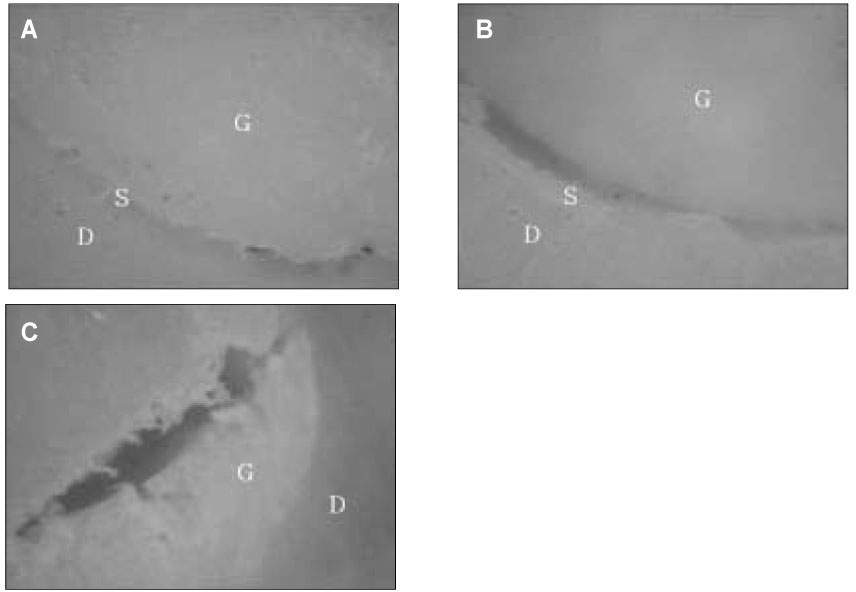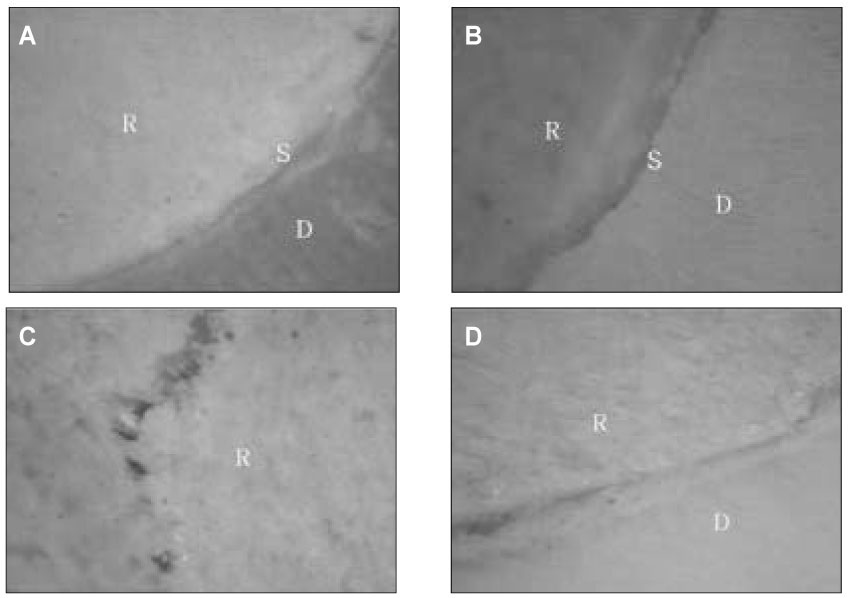References
1. Grossman LI, Oliet S, Del Rio CE. Endodontic Practice 11th ednth ed. Philadelphia: Lea & Febiger; 255.
2. Tagger M, Tagger E, Tjan AH, Bakland LK. Measurement of adhesion of endodontic sealers to dentin. J Endod 2002. 28351–354.
3. Ørstavik D, Eriksen HM, Beyer-olsen EM. Adhesive properties and leakage of root canal sealers in vitro. Int Endod J 1983. 1659–63.
4. Torabinejad M, Ung B, Kettering JD. In vitro bacterial penetration of coronally unsealed endodontically treated teeth. J Endod 1990. 16566–569.
5. Shipper G, Ørstavik D, Teixeira FB, Trope M. An evaluation of microbial leakage in roots filled with a thermoplastic synthetic polymer-based root canal filling material (Resilon). J Endod 2004. 30342–347.
6. Tay FR, Loushine RJ, Weller RN, Kimbrough WF, Pashley DH, Mak YF, Lai CS, Raina R, Williams MC. Ultrastructural evaluation of the apical seal in roots filled with a polycaprolactone-based root canal filling material. J Endod 2005. 31514–519.
7. Teixeira FB, Teixeira EC, Thompson JY, Trope M. Fracture Resistance of endodontically treated roots using a new type of resin filling material. J Am Dent Assoc 2004. 135646–652.
8. Sly MM, Moore BK, Platt JA, Brown CE. Push-out Bond Strength of a New Endodontic Obturation System (Resilon/Epiphany). J Endod 2007. 33160–162.
9. Johnson WT, Gutmann JL. In : Cohen S, Hagreaves KM, eds. Obturation of the cleaned and shaped root canal system. Pathways of the pulp 2006. 7th edth ed. St Louis: Mosby; 368–369.
10. Branstetter J, von Fraunhofer JA. The physical properties and sealing action of endodontic sealer cements : a review. J Endod 1982. 8312–316.
11. Zmener O, Spielberg C, Lamberghini F, Rucci M. Sealing properties of a new epoxy resin-based root-canal sealer. Int Endod J 1997. 30332–334.
12. Wennber A, Ørstavik D. Adhesion of root canal sealers to bovine dentine and gutta-percha. Int Endod J 1990. 2313–19.
13. Teixeira FB, Teixeira EC, Thompson JY, Trope M. Fracture resistance of roots endodontically treated with a new resin filling material. J Am Dent Assoc 2004. 135646–652.
14. Gesi A, Raffaelli O, Goracci C, Pashley DH, Tay FR, Ferrari M. Interfacial strength of Resilon and guttapercha to intraradicular dentin. J Endod 2005. 31809–813.
15. Tay FR, Pashley DH, Williams MC, Raina R, Loushine RJ, Weller RN, Kimbrough WF, King NM. Susceptibility of a polycaprolactone-based root canal filling material to degradation. I. Alkaline hydrolysis. J Endod 2005. 31593–598.
16. Nikaido T, Takano Y, Sasafuchi Y, Burrow MF, Tagami J. Bond strengths to endodontically-treated teeth. Am J Dent 1999. 12177–180.
17. Ungor M, Onay EO, Orucoglu H. Push-out bond strengths: the Epiphany-Resilon endodontic obturation system compared with different pairings of Epiphany, Resilon, AH Plus and gutta-percha. Int Endod J 2006. 39643–647.
18. Sagsen B, Er O, Kahraman Y, Akdogan G. Resistance to fracture of roots filled with three different techniques. Int Endod J 2007. 4031–35.
19. Burtscher P. Stability of radicals in cured composite materials. Dent Mater 1993. 9218–221.
20. Skidmore LJ, Berzins DW, Bahcall JK. An in vitro comparison of the intraradicular dentin bond strength of Resilon and gutta-percha. J Endod 2006. 32963–966.
21. Bouillaguet S, Troesch S, Wataha JC, Krejci I, Meyer JM, Pashley DH. Microtensile bond strength between adhesive cements and root canal dentin. Dent Mater 2003. 19199–205.
22. Ferracane JL. Developing a more complete understanding of stresses produced in dental composites during polymerization. Dent Mater 2005. 2136–42.
23. Alster D, Feilzer AJ, de Gee AJ, Davidson CL. Polymerization contraction stress in thin resin composite layers as a function of layer thickness. Dent Mater 1997. 13146–150.
24. Goldman M, Goldman LB, Cavaleri R, Bogis J, Lin PS. The efficacy of several endodontic irrigating solutions : a scanning electron microscopic study. part 2. J Endod 1982. 8487–492.
25. Baumgartner JC, Mader CL. A scanning electron microscopic evaluation of four root canal irrigation regimens. J Endod 1987. 13147–157.







